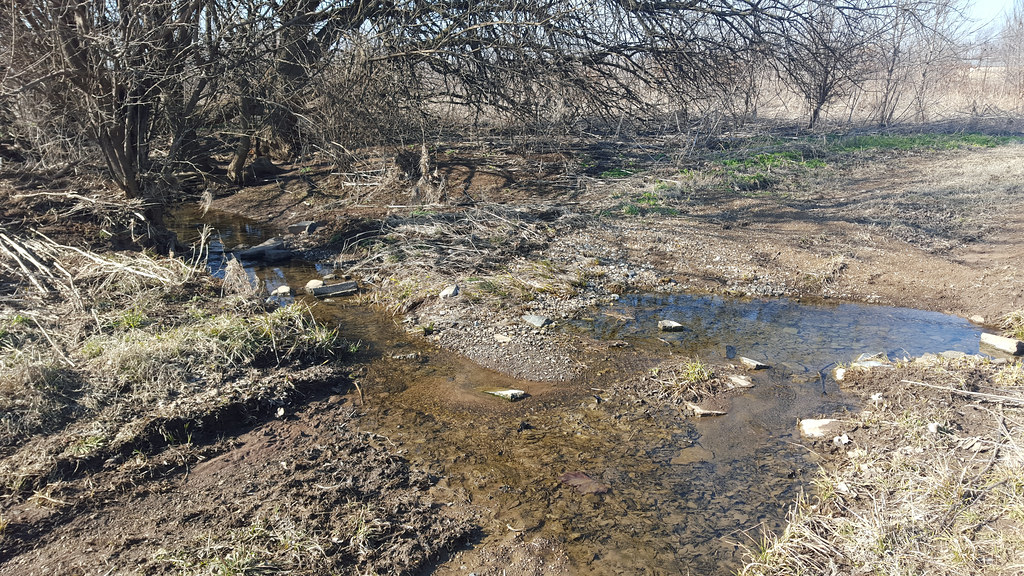Riparian buffers a crucial part of winter maintenance
By Benjamin Waldrum
UofA System Division of Agriculture
Jan. 29, 2016
Fast Facts:
- Riparian buffers stabilize stream banks and protect water quality
- Grass, understory and brush, and large trees make a successful buffer
- Create dedicated watering areas to give buffers time to heal
(447 words)
(Newsrooms: with art at https://www.flickr.com/photos/uacescomm/albums/72157664097603115 )
FAYETTEVILLE — For the average Arkansas landowner, winter is a time for maintenance and upkeep in preparation for the upcoming growing season, so it’s a good time to check on riparian buffers, said Dirk Philipp, associate professor-forages with the University of Arkansas System Division of Agriculture.
“Winter is the best time to check,” he said. “With no vegetation on trees and brush, the features of these buffer zones can be easily observed and adjusted as necessary.”
A riparian buffer is a vegetation-covered area next to a water resource. These buffer zones stabilize stream banks and protect water quality by filtering runoff from agricultural fields, residential lawns, roadways and other sources. This also benefits nearby wildlife.
“Although riparian buffers are very common landscape features in the South, many of these buffers no longer provide these benefits,” said Philipp.
In crop- and pastureland, buffers should have a minimum width of 50 feet on either side of the water source. It can be less in some places so long as the width is made up somewhere else.
Within this area, buffers have a three-stage layout: a grass buffer to retain nutrients and filter runoff; understory and brush to create habitats, provide shade and stabilize the soil; and large trees, which provide additional stability and shade by putting down deep roots.
When assessing riparian buffer quality, landowners should check for and address the following:
- Are there any travel lanes that compromise bank stability? If so, build dedicated watering spots nearby reinforced with geotextiles or made from concrete. “Laying coarse gravel on each side will prevent cattle from entering and lingering in streams,” said Philipp.
- Are there spots of bare soil in the grass buffer? This means the area may be overgrazed. To rectify the situation, graze infrequently for short periods of time during the coming year when the buffer area is relatively dry, or temporarily fence the area to discourage cattle from entering.
- Is there a reduced amount of brush and understory? Usually, temporary fencing will allow vegetation to regenerate quickly. Contact the USDA Natural Resources Conservation Service, or NRCS, on possible cost-share plantings, if necessary.
- Are large trees toppling into streams? This can be due to natural causes, or with steep banks, a slow movement of the entire buffer towards the stream. As with brush and understory, check with NRCS to see if tree cost-sharing is an option.
Although agricultural and animal use can reduce the quality of riparian buffers, the damages can be repaired with proper care and maintenance.
“Building dedicated watering areas for cattle goes a long way towards letting the stream banks and buffer zones revegetate and ‘heal’ by itself,” said Philipp.
For more information on riparian buffers and winter maintenance, contact your county Extension office or visit www.uaex.uada.edu.
Pursuant to 7 CFR § 15.3, the University of Arkansas System Division of Agriculture offers all its Extension and Research programs and services (including employment) without regard to race, color, sex, national origin, religion, age, disability, marital or veteran status, genetic information, sexual preference, pregnancy or any other legally protected status, and is an equal opportunity institution.
# # #
Media Contact: Mary Hightower
Dir. of Communication Services
U of A Division of Agriculture
Cooperative Extension Service
(501) 671-2126
mhightower@uada.edu
Related Links
